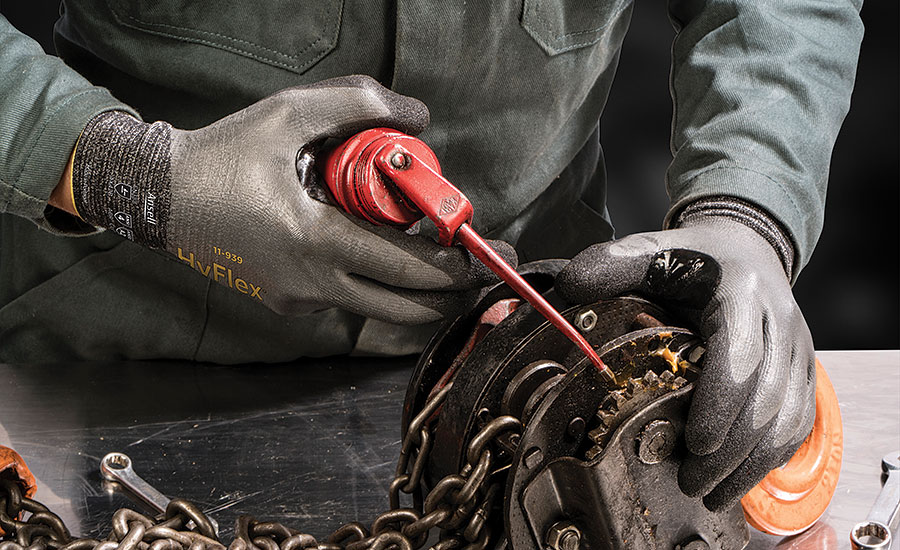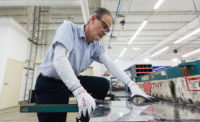What did your morning routine look like today? Perhaps you brushed your teeth before running out the door, giving the doorknob an extra pull to ensure the front door was locked. Maybe you ran through the drive-through and ordered your regular coffee without giving the menu a second thought. You might have even glanced at your phone while at a red light to see if your boss had emailed you yet. Our days are full of routine habits — good and bad — that largely impact the rest of our day.
And habits aren’t just reserved for our personal lives — hundreds of habits influence our workday on a regular basis. Perhaps one of the most important habits is how one dons their personal protective equipment (PPE). After all, habitually donning the right gloves throughout the day might make the difference between returning home from work safely or a visit to the hospital with an injured hand. One would think the choice to don gloves would be an easy one. But you would be wrong. Too many workers either don’t wear gloves or wear the wrong gloves for the job — and it’s unfortunately become all too common in today’s workplace.
Getting to the root of noncompliance
Before we break down bad PPE habits, it’s important to recognize the positive ways hand protection habits have impacted the workplace. There once was a time when regular hand protection in the workplace was an afterthought at best. However, frequent burns, nasty cuts or dirty hands eventually led to the consistent practice of donning gloves in most industrial environments.
For decades, it was standard practice to wear simple cotton, canvas or leather gloves for day-to-day protection. However, a changing workforce — new technologies, advanced machinery and a constant drive to multitask and optimize efficiency — created a need for more advanced hand protection. Safety managers started to recognize that PPE designed with technologies and materials intended to support comfort, performance and protection were a better choice for both their workers and their bottom line. Advanced industrial environments replaced traditional routine work, changing the PPE needs and requirements of workers in the process.
So, is it safe to say a changing workforce can redefine the habits of a worker? Unfortunately, it’s not that simple and straightforward.
According to the Bureau of Labor Statistics (OSHA), 70 percent of workers who suffered hand injuries were not wearing gloves when they suffered the injury. The other 30 percent were wearing gloves that were inadequate, damaged or the wrong type of glove for the hazard. That’s a statistic that’s sure to frustrate any safety manager — or anyone who cares about worker safety for that matter. The performance and quality of gloves have caught up to the demands of today’s workforce — why haven’t workplace practices?
Decoding a habit
We tend to notice bad habits in everyday life – nail-biting, mindless snacking, obsessively checking a smart phone. But there are good habits too. A morning jog or flossing your teeth at night are good examples. Our life is often impacted by hundreds of habits, and we often do these routines without thinking. That’s the exact essence of a habit — a common behavior that becomes automatic in one’s daily life.
Automatic is a key word here — habitual behaviors can become automatic outside of any conscious or rationale thought process. When applied to the concept of wearing PPE, the brain may comprehend that a glove provides critical protection. However, if removing a glove has become a regular habit, that safety knowledge might not make a difference, and the glove may still be removed.
That’s where we run into the real danger. Every time a worker chooses to remove a glove in an application that requires the need to protect the hand — or chooses to wear a glove with improper protection for the task at hand — they are at risk of injury. According to the Bureau of Labor Statistics, more than one million workers go to the emergency room with hand injuries each year. That’s a startling statistics that safety managers simply can’t tolerate. And with so many quality PPE products available, they shouldn’t have to. The safety solutions needed to protect workers are available, and many safety managers are making them easily accessible every day. So where’s the disconnect?
Teaching an old dog new tricks
Let’s revisit the earlier statistic from the Bureau of Labor Statistics that noted 70 percent of workers who suffered hand injuries were not wearing gloves when they suffered the injury. It’s not that they weren’t provided gloves or weren’t wearing them. It’s more likely that they removed their gloves at some point throughout the workday. That’s a routine that can be tied to habit.
Maybe a worker associates better dexterity when handling small parts with bare fingertips. Result? The worker removes his or her gloves. Perhaps a worker finds it easier to check his phone without wearing a glove. Result? The gloves come off. Maybe a worker simply associates comfort with a bare hand. The result? I bet you can guess.
So how do we change the bad habits of workers around the world? It all comes down to conducting a proper risk assessment and pinpointing the root of the bad habit and glove removal – and then eliminating the issue and reconditioning the habit through better glove solutions, education and proactive safety monitoring. Thankfully, most glove manufacturers make this process easier for safety managers. New materials and designs can deliver effective protection while delivering the grip and dexterity workers need and the comfort they deserve. Likewise, there are multitudes of multipurpose gloves on the market specifically designed to eliminate the need for workers to remove or change gloves between tasks.
Breaking the bad habit
Changing bad habits of workers is easier now than ever before. Advancements in gloves are specifically designed to combat the core reasons workers remove gloves, inherently paving the path toward compliance. However, humans are inherently creatures of habit — and it takes time to recondition routine behaviors, even if the right resources are provided.
It’s encouraging to know that an infinite amount of resources and safety solutions are easily available to safety managers. Selecting the right PPE for specific worker protection and comfort needs, along with a proactive approach to changing behavior and encouraging compliance can help to break bad habits once and for all.
- United States Department of Labor. Occupational Safety and Health Administration, 59 FR 16339 April 6, 1994 (preamble). Available online at: https://www.osha.gov/pls/oshaweb/owadisp.show_document?p_table=PREAMBLES&p_id=1021
- https://www.bls.gov/iif/

